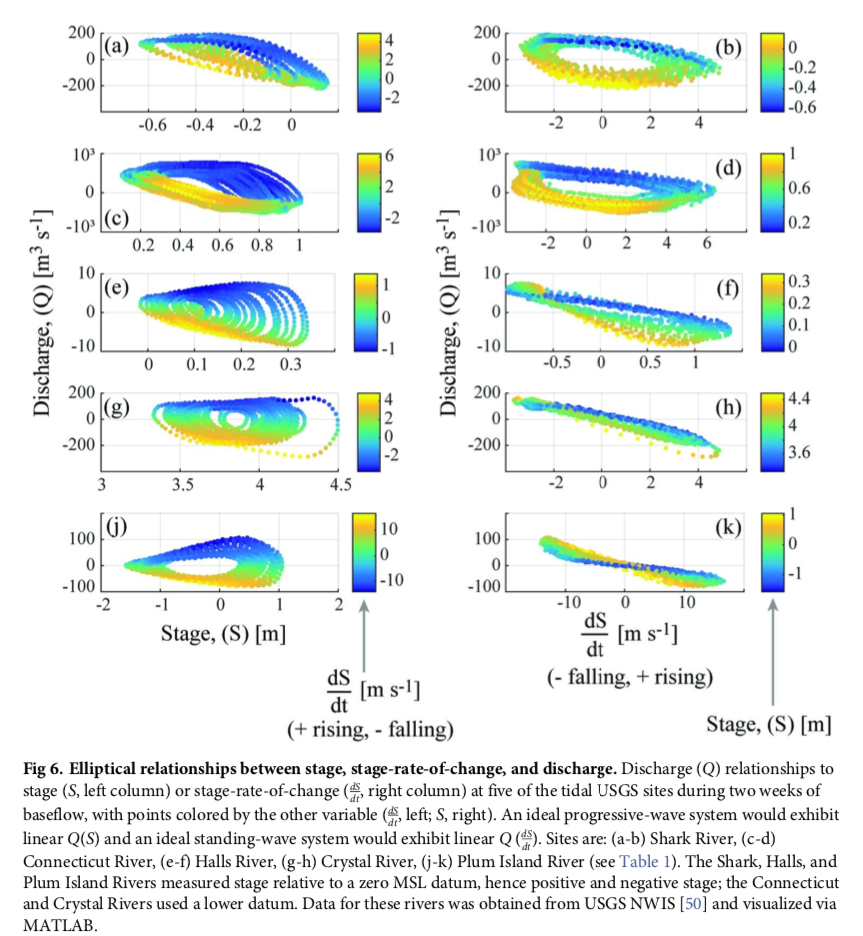An expanded rating curve model to estimate river discharge during tidal influences across the progressive-mixed-standing wave systems
ABSTRACT: Empirically quantifying tidally-influenced river discharge is typically laborious, expensive, and subject to more uncertainty than estimation of upstream river discharge. The tidal stage-discharge relationship is not monotonic nor necessarily single-valued, so conventional stage-based river rating curves fail in the tidal zone. Herein, we propose an expanded rating curve method incorporating stage-rate-of-change to estimate river discharge under tidal influences across progressive, mixed, and standing waves. This simple and inexpensive method requires (1) stage from a pressure transducer, (2) flow direction from a tilt current meter, and (3) a series of ADP surveys at different flow rates for model calibration. The method was validated using excerpts from 12 tidal USGS gauging stations during baseflow conditions. USGS gauging stations model discharge using a different more complex and expensive method. Comparison of new and previous models resulted in good R2 correlations (min 0.62, mean 0.87 with S.D. 0.10, max 0.97). The method for modeling tidally-influenced discharge during baseflow conditions was applied de novo to eight intertidal stations in the Mission and Aransas Rivers, Texas, USA. In these same rivers, the model was further expanded to identify and estimate tidally-influenced stormflow discharges. The Mission and Aransas examples illustrated the potential scientific and management utility of the applied tidal rating curve method for isolating transient tidal influences and quantifying baseflow and storm discharges to sensitive coastal waters.


